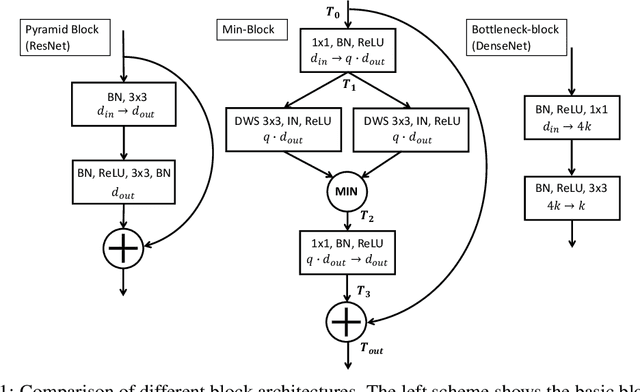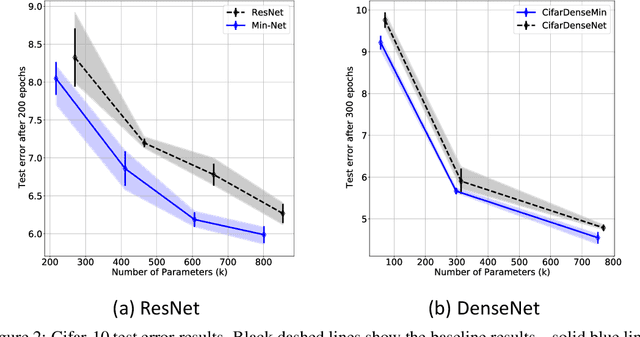Bio-inspired Min-Nets Improve the Performance and Robustness of Deep Networks
Paper and Code
Jan 06, 2022



Min-Nets are inspired by end-stopped cortical cells with units that output the minimum of two learned filters. We insert such Min-units into state-of-the-art deep networks, such as the popular ResNet and DenseNet, and show that the resulting Min-Nets perform better on the Cifar-10 benchmark. Moreover, we show that Min-Nets are more robust against JPEG compression artifacts. We argue that the minimum operation is the simplest way of implementing an AND operation on pairs of filters and that such AND operations introduce a bias that is appropriate given the statistics of natural images.
* Gruening, P., & Barth, E. (2021, October). Bio-inspired Min-Nets
Improve the Performance and Robustness of Deep Networks. In SVRHM 2021
Workshop@ NeurIPS
View paper on
 OpenReview
OpenReview
 Add to Chrome
Add to Chrome Add to Firefox
Add to Firefox Add to Edge
Add to Edge